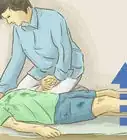This article was co-authored by wikiHow Staff. Our trained team of editors and researchers validate articles for accuracy and comprehensiveness. wikiHow's Content Management Team carefully monitors the work from our editorial staff to ensure that each article is backed by trusted research and meets our high quality standards.
wikiHow marks an article as reader-approved once it receives enough positive feedback. In this case, 87% of readers who voted found the article helpful, earning it our reader-approved status.
This article has been viewed 107,381 times.
Learn more...
Desert hiking can be beautiful and exhilarating, but it's vital to know how best to dress to avoid dehydration, sunburn and heatstroke. If you've never been to the desert, or are planning on a long hike, knowing how to dress and what to bring can be a lifesaver.
Steps
Starting with the Basics
-
1Wear wicking underwear. Start with undergarments that are made from synthetic nylon, polyester or spandex blends and offer moisture wicking. That means less chafing and more comfort. Women might want to wear a sports bra, which are built for warm and sweaty conditions.[1]
-
2Wear long pants. Yes, it's hot, but protecting your skin from the elements is vital. Think loose, lightweight cotton pants in light colors, such as khakis or cargo pants. Looser pants keep air moving and help evaporate sweat. Long pants also help protect your legs from spiny plants.Advertisement
-
3Cover your arms. Long-sleeved, slightly loose cotton shirts are your best bet. Make sure your collarbone and chest are covered too. Choose light colors that help reflect the sun's rays.[2]
- Layering a t-shirt or tank top may be helpful under your long-sleeved shirt, so you can remove your top layer in shady spots and cool off a bit. Choose a close-fitting, wicking fabric.
-
4Dress for the weather. Deserts can get surprisingly cold at night. A windproof shell will protect against gusts. For cooler months or nights, a fleece pullover is ideal. Fleece dries quickly and can be used as a pillow in a pinch. If you get lost or stuck, a jacket or space blanket can help prevent hypothermia.[3]
Accessorizing with Care
-
1Wear moisture-wicking socks. If your feet aren't happy, the rest of you won't be either. Make sure they're a snug-fitting blend that wicks moisture, and rise to crew length (mid-calf), so no sun or scorpions can sneak through.[4]
- It may seem counterintuitive, but merino wool is a great bet for a natural wicking fabric on hot summer days. It also repels odors.
- Avoid all-cotton socks, which keep moisture close to your feet and can cause blisters.
-
2Invest in good boots. This is the place to spend the most money. Boots are a vital part of your gear, and can protect you from injury, snakes, spines and heat. Wearing higher-cut hiking boots offers additional ankle support. You may need to go a size up from your normal shoes.
- Choose a sturdy, slip-free sole that will work well on rocks and rough terrain. [5]
- Depending on terrain, you'll probably want trail or rough-trail rated boots. Look for a pair that's got some ventilation for hot desert conditions.[6]
- Look for adequate padding around your ankle, which is critical for long-wear comfort.[7]
- When trying on boots, make sure you wear the same socks you'll be wearing to hike.
-
3Don't forget a hat. Wide-brimmed is best, but if you're attached to your baseball cap, add a bandana to cover your neck. Add a strap to make sure strong winds don't carry your hat away. [8]
-
4Remember sunglasses and sunscreen. Make sure they offer complete UV protection. Look for a broad-spectrum sunscreen, at least SPF 30. Apply liberally to any exposed skin, including lips and hands. Bring a small tube for reapplying.
Bringing Additional Items
-
1Use a lightweight backpack. Pick one that fits comfortably and distributes weight evenly. Travel light. Your heaviest items should be water and food.[9]
-
2Bring plenty of water. Being dehydrated in the desert can be deadly. A good rule of thumb is to drink a liter per hour, more if you're hiking in temperatures above 85F/30C. [10]
-
3Bring food. You'll need quick energy with all the calories hiking in the desert can burn. Sports bars, trail mix, sandwiches, dried fruit and jerky are popular options. Look for non-perishable options. [11]
-
4Pack vital survival supplies. A first aid kit, signal mirror, flashlight and compass should be in your pack. You may not need them, but if you do, you'll be glad to have them on hand. [12]
Community Q&A
-
QuestionWhat should I pack for a trip to the desert?
 Community AnswerBring light layers and light-colored clothing, sunglasses, a water bottle and plenty of sunscreen.
Community AnswerBring light layers and light-colored clothing, sunglasses, a water bottle and plenty of sunscreen. -
QuestionWhat is the weather like in the desert?
 Community AnswerDeserts are, by definition, dry and arid, receiving very little rainfall. In the summer, deserts tend to be very hot during the day, although they can be very cold at night depending on the location. In the winter, they can be cold even during the day. Long sleeves are a must, regardless of season, as the risk of sunburn is very high.
Community AnswerDeserts are, by definition, dry and arid, receiving very little rainfall. In the summer, deserts tend to be very hot during the day, although they can be very cold at night depending on the location. In the winter, they can be cold even during the day. Long sleeves are a must, regardless of season, as the risk of sunburn is very high. -
QuestionAren't "Cotton shirts are your best bet" and "Avoid all-cotton socks, which keep moisture close" contradictory?
 Tom De BackerTop AnswererIn fact, the advice is sound. You don't put sunglasses on your knees to protect them from getting sunburned. Around your torso, the cotton can be worn lightly, allowing your body to 'breathe'. Around your feet and ankles, cotton socks are stuffed and squeezed, reducing their breathing effect to almost zero.
Tom De BackerTop AnswererIn fact, the advice is sound. You don't put sunglasses on your knees to protect them from getting sunburned. Around your torso, the cotton can be worn lightly, allowing your body to 'breathe'. Around your feet and ankles, cotton socks are stuffed and squeezed, reducing their breathing effect to almost zero.
References
- ↑ http://www.treksw.com/desert-hiking-clothing-checklist-2/
- ↑ http://www.treksw.com/desert-hiking-clothing-checklist-2/
- ↑ http://www.grandcanyonhiker.com/planners/gear/desertdressed.shtml
- ↑ http://www.treksw.com/desert-hiking-clothing-checklist-2/
- ↑ http://visitsedona.com/what-to-do/hiking/
- ↑ http://www.backpacker.com/gear/gear-choosing-the-right-pair-of-hiking-boots
- ↑ http://www.backpacker.com/gear/gear-choosing-the-right-pair-of-hiking-boots
- ↑ http://www.grandcanyonhiker.com/planners/gear/desertdressed.shtml
- ↑ https://www.nps.gov/grca/planyourvisit/hike-tips.htm
About This Article
To dress for desert conditions, begin with undergarments that wick away moisture, like sports bras and underpants made from blends of nylon, polyester or spandex. For outerwear, opt for light-colored cotton clothes, and favor long pants and long-sleeved shirts that cover your skin well. Additionally, stick to loose garments so you have plenty of airflow. This will help you cool down during the hot hours. Since nights can be cold, layer your clothes, and bring a jacket for warmth. As for footwear, choose good quality, rough-terrain hiking boots with ankle support and breathability. To complete your outfit, add accessories like a wide-brimmed hat and sunglasses. Read on for more tips, including what to pack for desert survival.




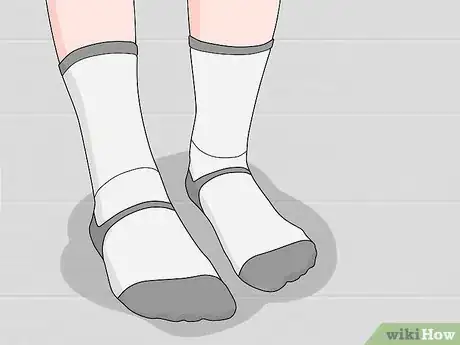
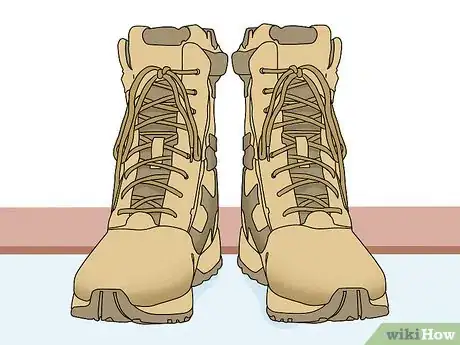

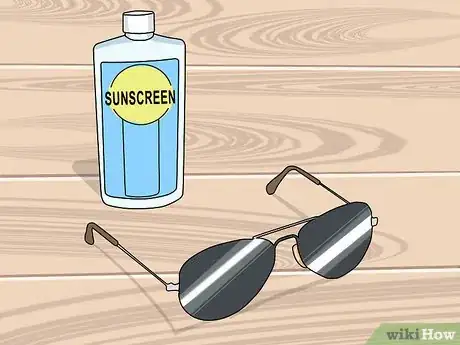

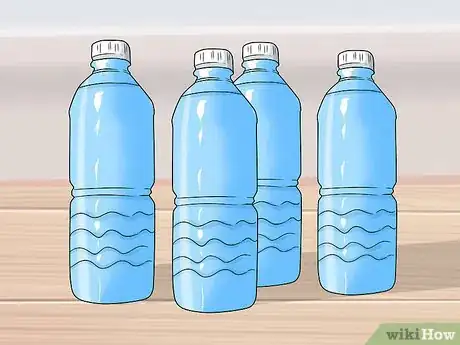

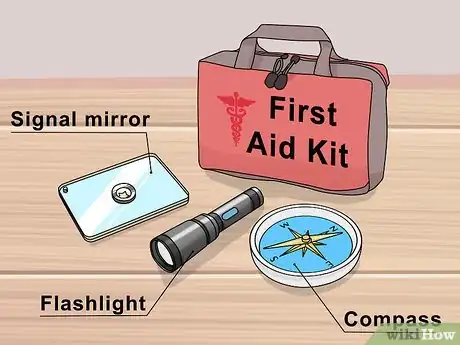
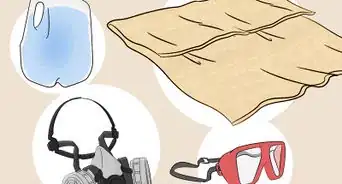







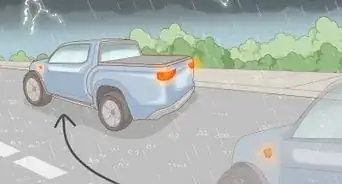
-Step-13.webp)













